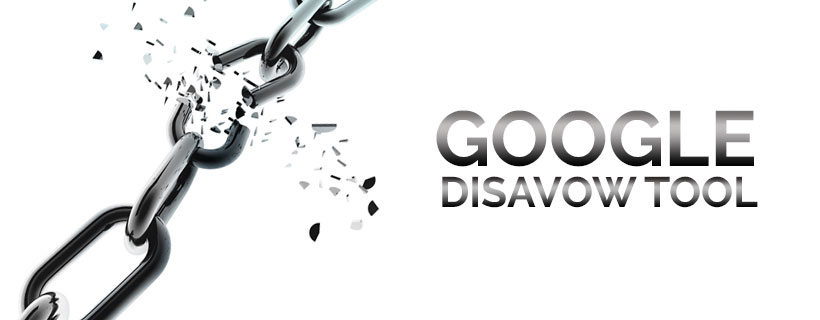Should You Use The Disavow Tool – Now, After A Decade, There Is An Answer
Find out if a link disavow is necessary and avoid costly blunders.
On October 16, 2012, Google’s disavow links tool went live. This was nearly a decade ago. As we get closer to the tenth anniversary, webmasters are still unsure of how to conduct a link analysis and how to use backlink data appropriately when considering a disavow. Since 2012, a lot has changed!
We’ll go over current approaches to take based on our experience disavowing links over the past decade, whether you’re disavowing as a preventative measure or to recover your rankings.

Who may need a link disavow?
Let’s begin by responding to the majority of you, who probably do not require a disavow. A link disavow won’t help if you’ve stuck with natural link acquisition and SEO traffic is growing. This is especially true if your website is in a less competitive industry or already has few backlinks. If the tool isn’t used properly, submitting a disavow can even hurt the rankings of otherwise healthy websites.
Examine your backlinks and consider filing a disavow if:
1.You have taken manual action in response to a notice in Google Search Console titled “unnatural links.”
2.You are aware that your website has been linked to unnaturally, either recently or in the past. As Google continues to map out artificial link networks, even links from years ago can come back to bite you.
3.You have experienced a loss of traffic and ranking that cannot be explained, or you have lost traffic close to the time of a known Google link-based update or core algorithm update. Similarly, you may suspect that off-page factors are to blame for traffic fluctuations over extended periods of otherwise robust on-page SEO and content creation efforts.
4.You may be the target of a negative SEO attack if you regularly notice a lot of new spammy links pointing to your website.
5.You want to learn more about your current link profile and risk level because you don’t completely trust the algorithm.
Google is likely to remove links from scrapers and other obvious forms of spam, so they won’t hurt you and won’t be counted against you. They are present on nearly every website, and if you are concerned, you can usually ignore them yourself or include them in your disavow. However, links from established link sellers and link networks can become a significant issue. Successive third party referencing strategies requiring a connection repudiate include:
- purchasing sponsored content or guest blog posts without the appropriate link attributes.
- buying links that are guaranteed to have a certain amount of “authority.”
- acquiring links from a list of websites whose placement prices vary.
- acquiring anchor links with a lot of keywords that point directly to SEO landing pages.
- buying links at all, particularly from people who offer pre-selected placements.
Putting together and properly analyzing your backlinks
For a high level Website design enhancement searching for the most far reaching look and their connection information, consolidating numerous datasets (Google Search Control center, Ahrefs, Moz, Great, Semrush, etc) will arrange the absolute most complete picture of your backlink profile. A second reminder that disavowing can cause more harm than good if you are not completely confident in your approach is hiring a professional to assist the rest of you. Even if they only provide a small “sampling” of your entire link profile, downloading the links provided by Google Search Console will likely be sufficient if you decide to do it on your own.
You will need to decide how to analyze your backlinks once you have your link data. The majority of webmasters take shortcuts and rely on software to determine whether a link is “authoritative” or “toxic.” A quick but risky way to gather links for your disavowal is to do so in this manner.
Despite being convenient, we do not recommend:
1.SEO software’s third-party link metrics that list your links’ “authority,” “trust,” or “rating.” A site’s ability to rank itself is better represented by these scores than its ability to transfer link equity (or harm) to you. Since Google doesn’t use their data, these companies don’t provide these metrics. Google also doesn’t take into account whether a website that links to you has disavowed any of its own links or has been penalized by Google for selling links. Their scoring is based on their unique and frequently limited crawl. Unexpectedly, many punished destinations will get a high “authority,” “trust score,” or “rating” because of the amount of their (malicious) backlinks, and these are unquestionably not locales you’d need a connection from!
2.Pasting the “toxic” or “spam” link list of any software into your disavowal. Webmasters frequently rely on this, which results in additional traffic loss. One more reminder: If done wrong, a disavow can cause more harm than good.
3.Deciding based on how much traffic a linking site gets. Even from a hobbyist website, town library, or local nonprofit, a link can be natural and relevant. Because they typically do not rank for a large number of commercial phrases, it is likely that these websites do not receive a lot of traffic. However, they still provide natural and unrestricted links to your overall link profile. Do not deny these!
Instead, think about this:
1.Does the website that is linking to you appear to be a useful resource that has been put online to benefit its audience? Is it kept up by someone who knows a lot about the subject or has a lot of interest in it? Do they naturally link to you as part of their own content and collection of resources? If that’s the case, this is probably a great link to have, and you won’t have to worry about it breaking anything.
2.What does the link neighborhood of the linking site actually look like? Do the backlinks appear to have been manipulated for SEO purposes, or are they genuine? Are the external links scattered throughout the website intended to provide additional information about the subject at hand and in keeping with the overall theme of the site? You can safely remove this link from your disavow file if the site’s internal and external links pass the smell test.
3.Is the site connecting to you loaded up with fluctuating substance and numerous inconsequential outer connections? Is it a blog you’ve never heard of with articles on everything and constant links to commercial websites in every article? Links from websites that follow this pattern are probably in a link network or database, can hurt your SEO, and were a major target of Google’s link spam update in the summer of 2017. You should think about disavowing links from websites that fit this description, especially if they have never given you any direct traffic from people who click on your link.
Analyses (preventative or reactive) and frequency of revoking
Keeping an eye on your link profile, like the majority of SEO efforts, is rarely a one-and-done endeavor; rather, it frequently resembles a game of cat and mouse, depending on the circumstances. On the off chance that your site and its traffic levels are sound and developing, returning to your backlink profile should be possible on a less incessant premise. Semi-yearly or yearly might be suitable relying upon your degree of concern.
In this circumstance, a preventative disavow might make sense. Google is months behind on reconsideration requests in the event of problems, which is not a situation you want to find yourself in. Always keep in mind that links are extremely difficult to obtain and an essential component of Google’s ranking algorithm; consequently, refraining from linking here is typically the most effective strategy.
On the other hand, if a webmaster has been affected by manual action or link-based updates in the past or believes they are being targeted by a negative SEO campaign, it may be worthwhile for them to review their backlinks and update their disavow files more frequently. When disassociating yourself from links that have the potential to cause issues in the near or long term, making revisions more frequently can help ensure that you are ahead of the algorithm.
Last thoughts-disavow
Google’s disavow links tool has been a frequently misunderstood component of its Search Console for webmasters since its inception a decade ago. Its use cases have expanded to include both preventative and reactive scenarios, having initially been required solely as a means of resolving manual actions and as a response to the rollout of the “Penguin” algorithm in 2012. Similarly, over the past ten years, webmasters’ methods for reviewing their links have evolved for a variety of reasons.
Regardless of whether you need to use the disavow tool, it’s important to remember that one of the biggest SEO growth drivers is the acquisition of natural, reputable links, which directly contribute to traffic and ranking increases over time. Earning safe and effective links helps you avoid having to disavow at all and lowers the risks in your backlink profile.
Member read also next article
What We Can Gain From At Various Times Google Algorithm Refreshes



